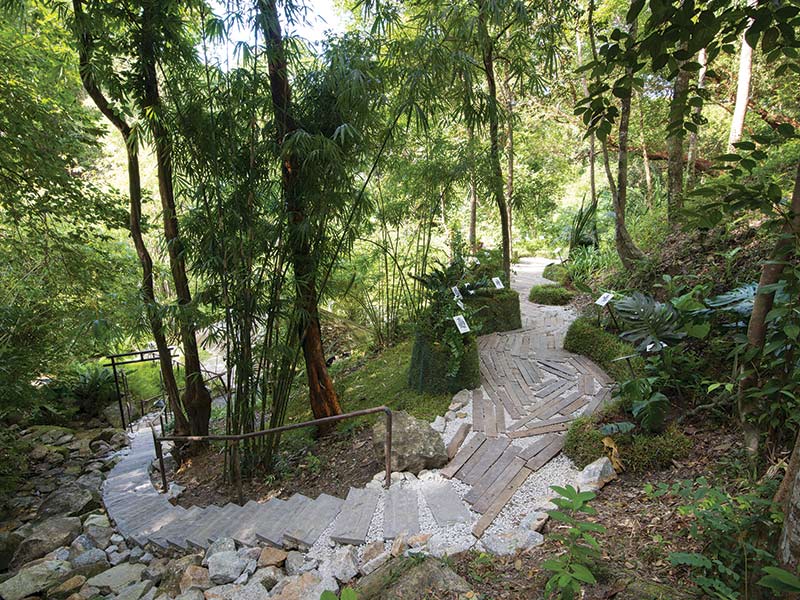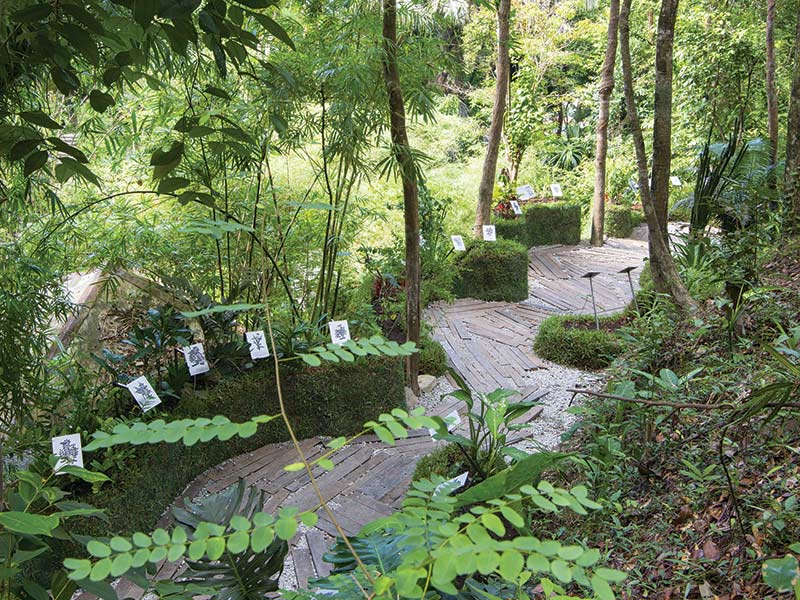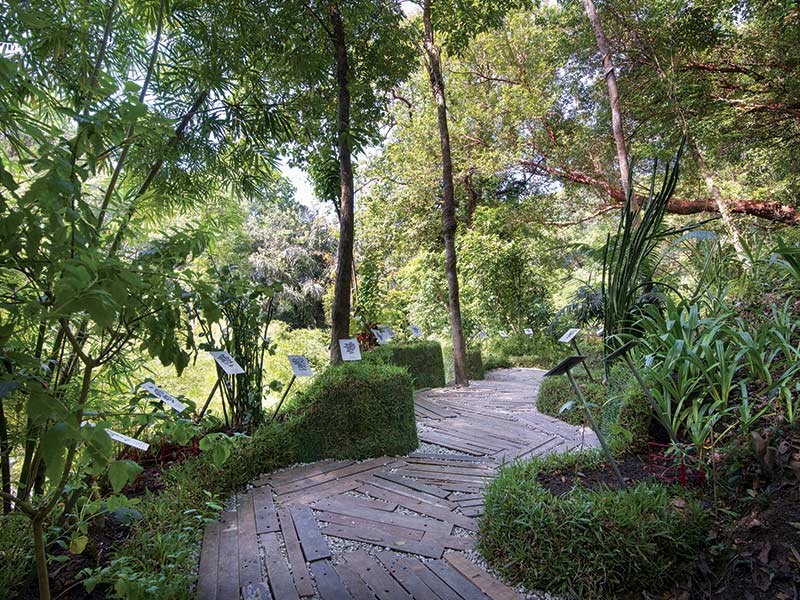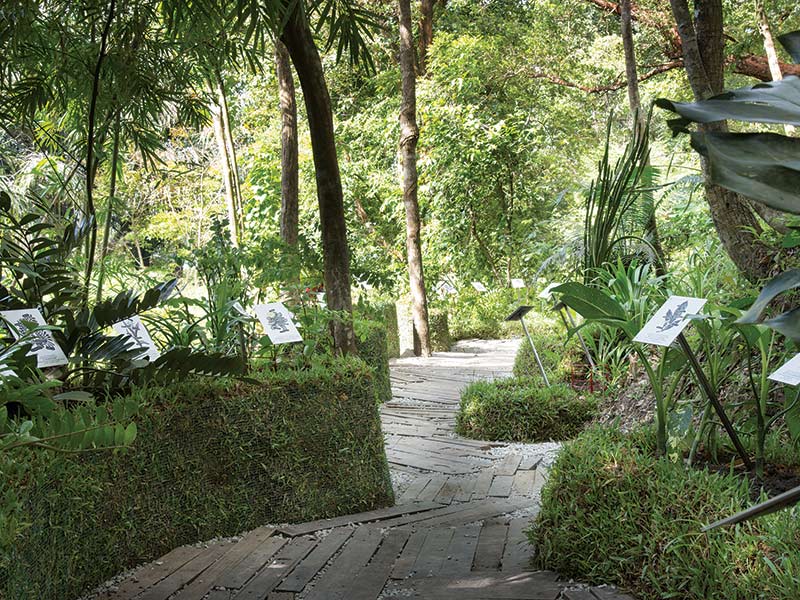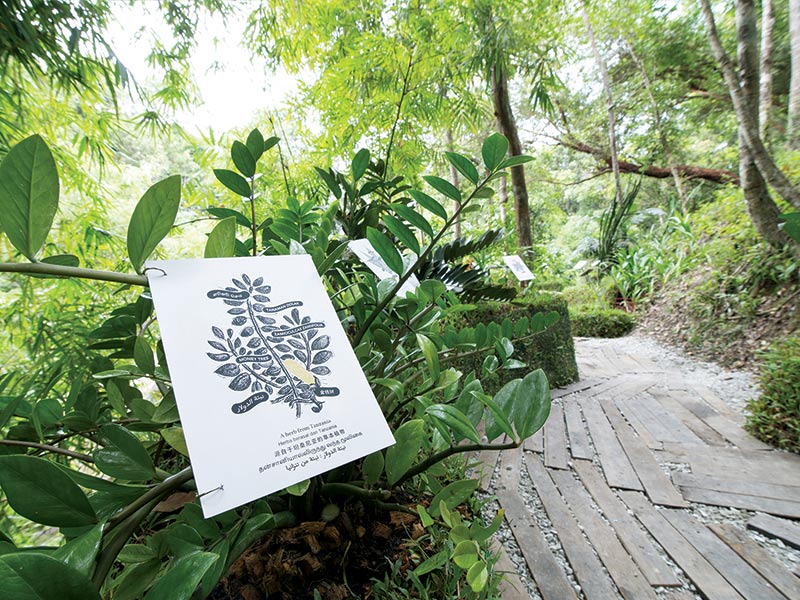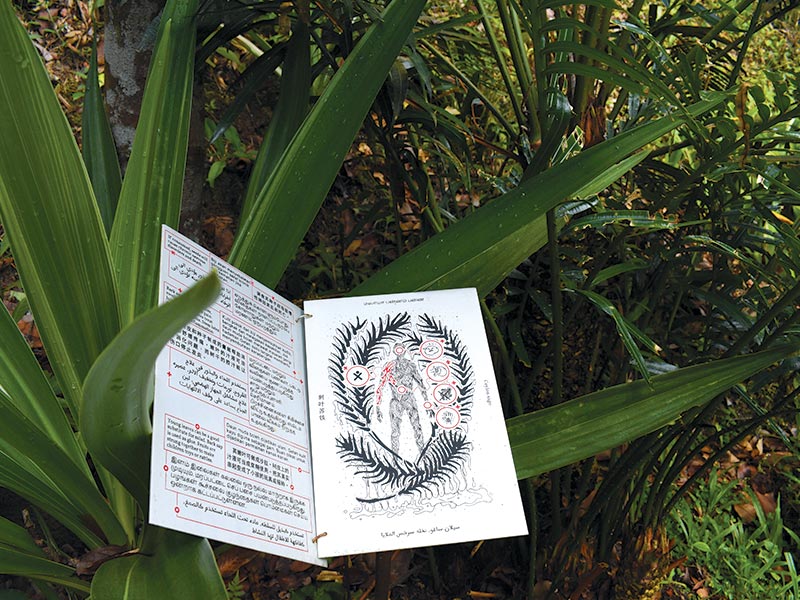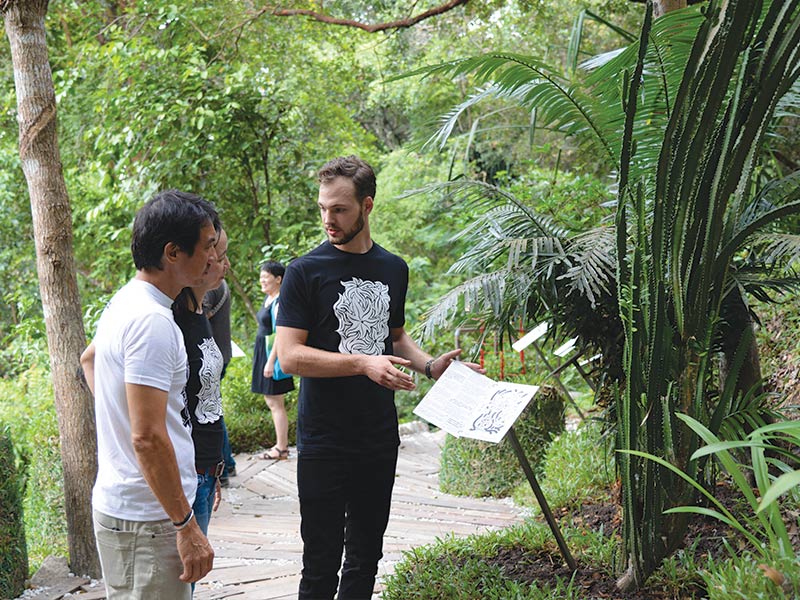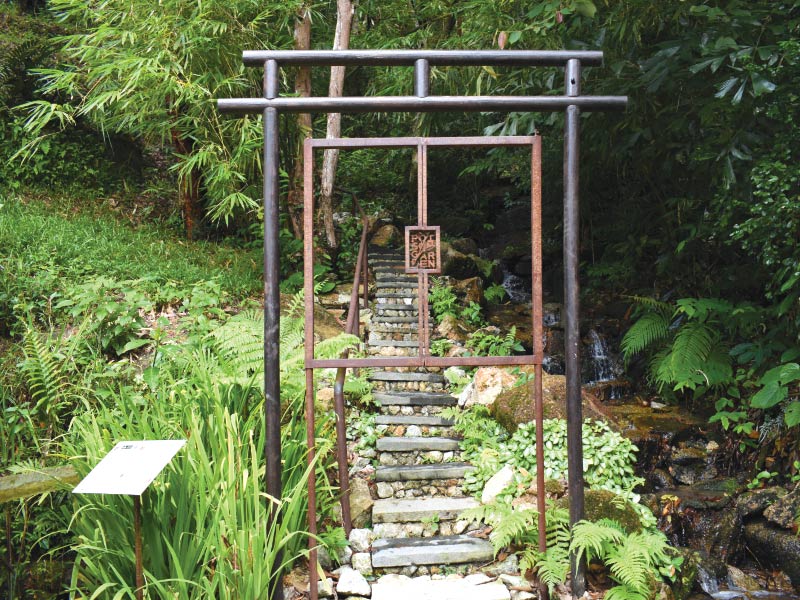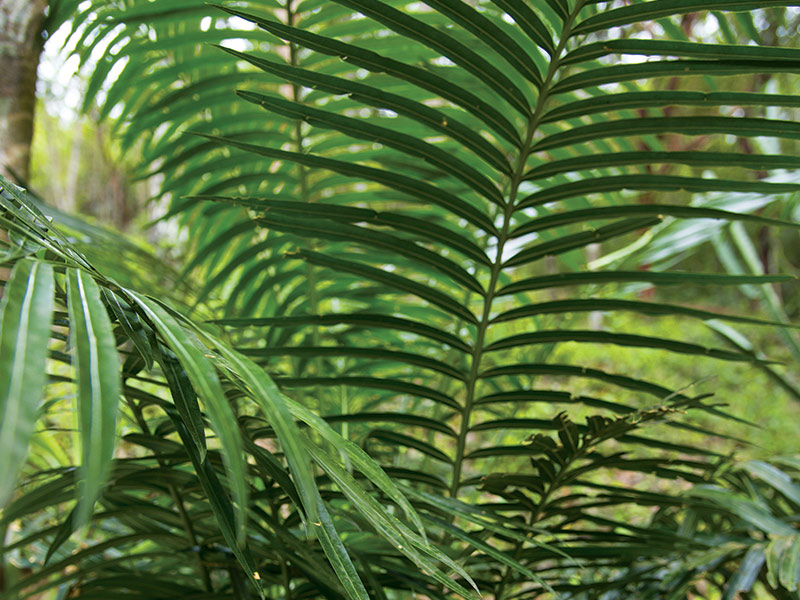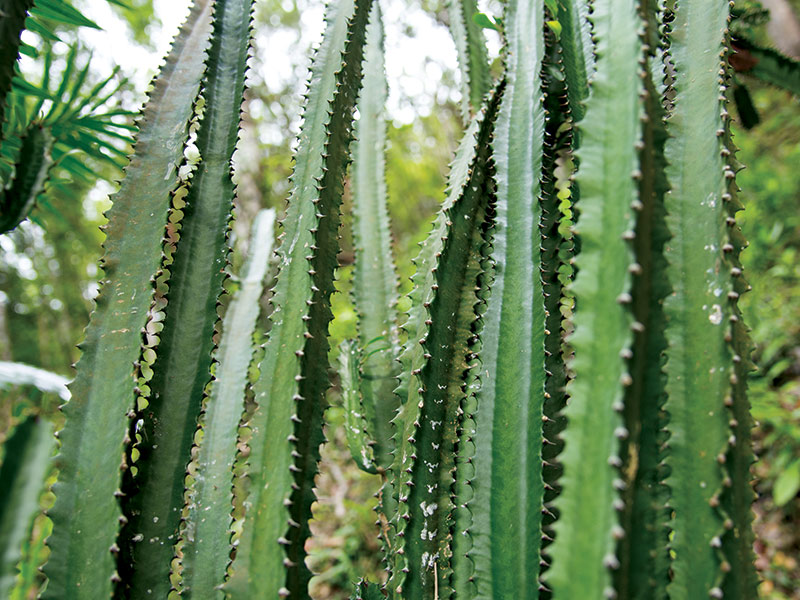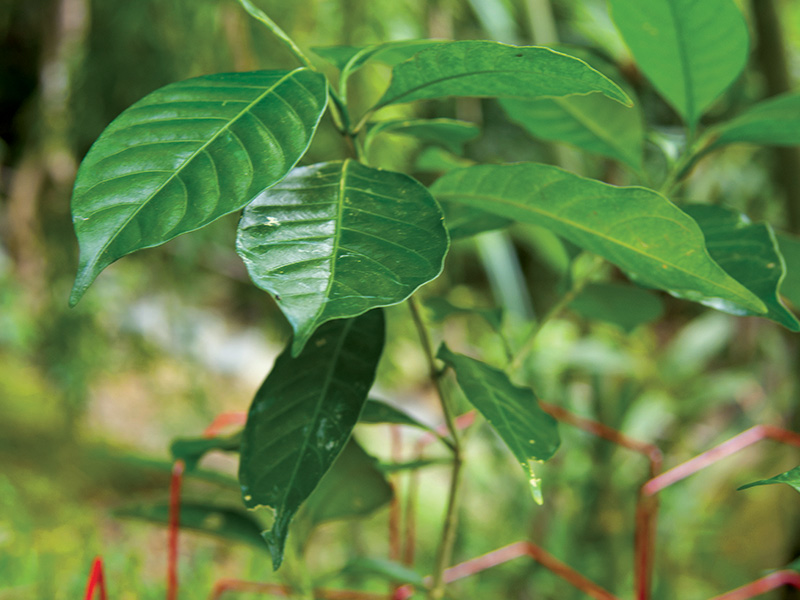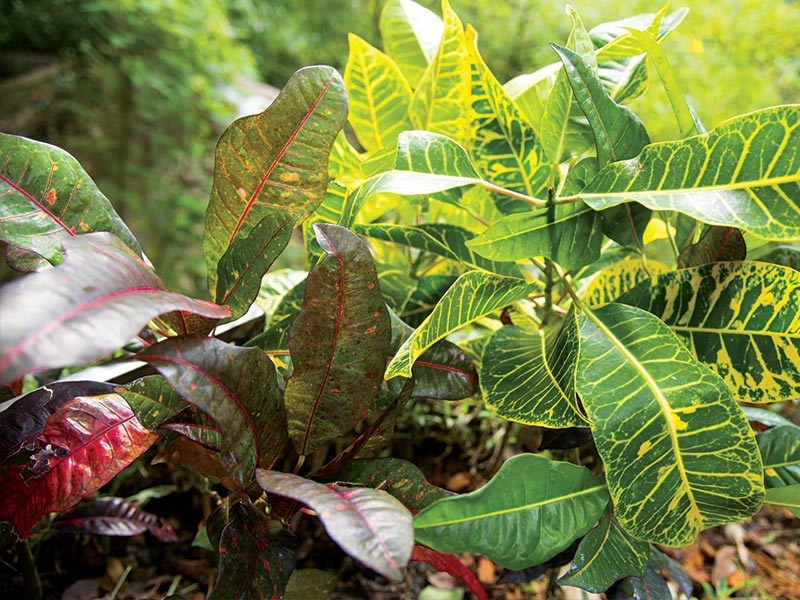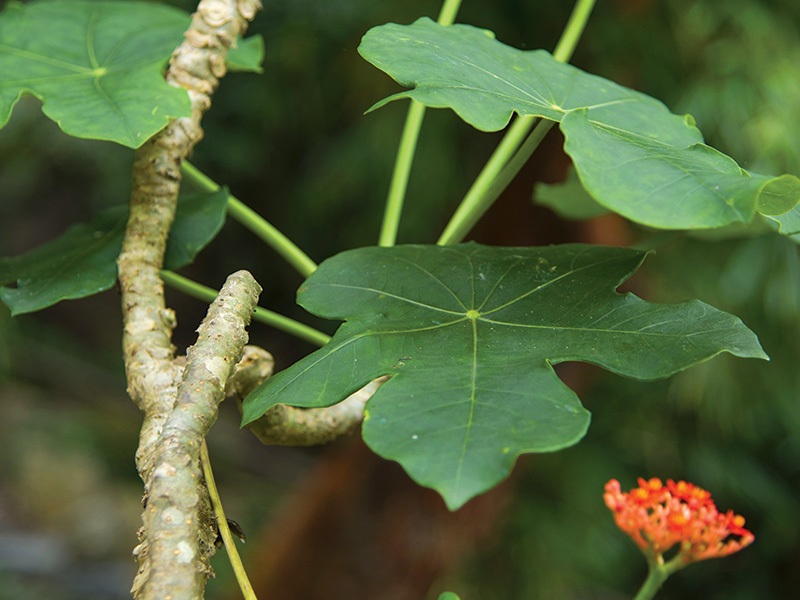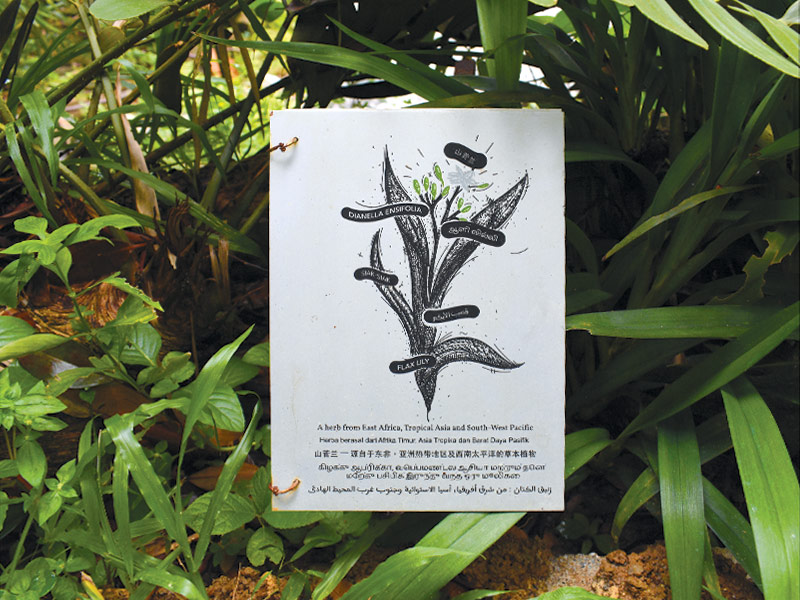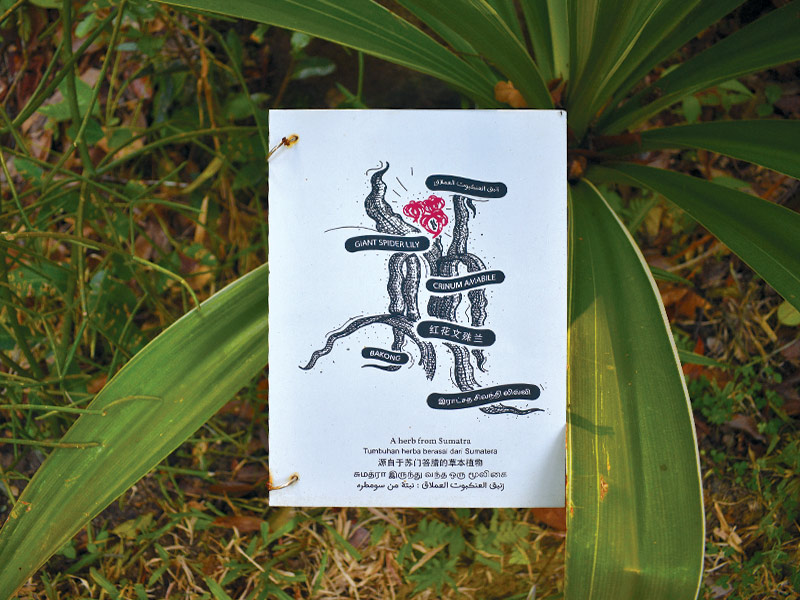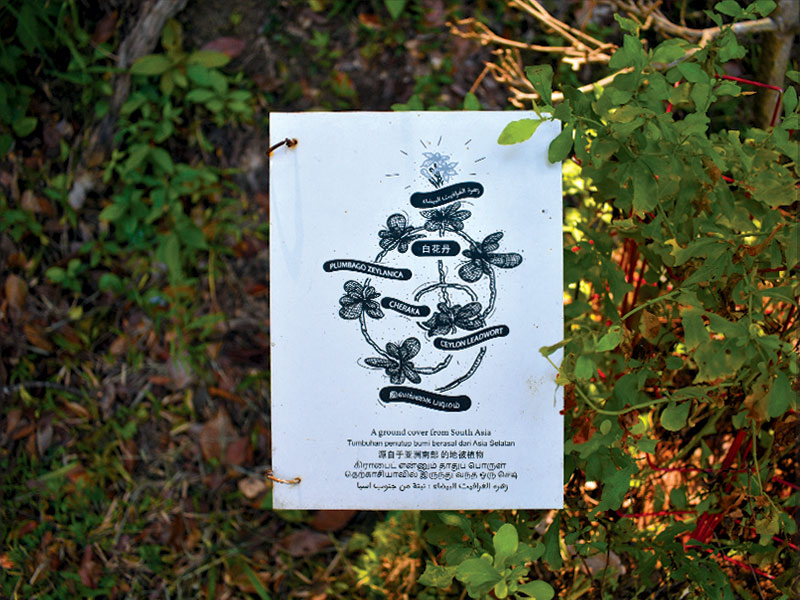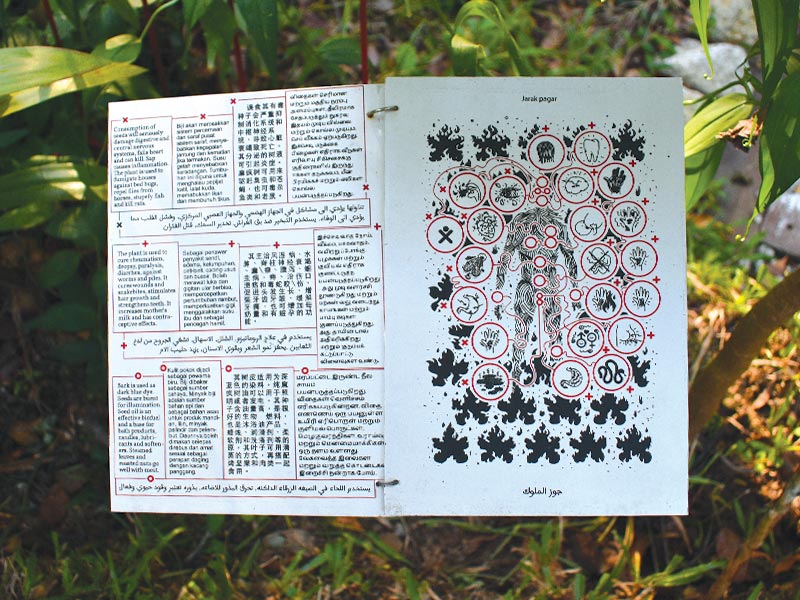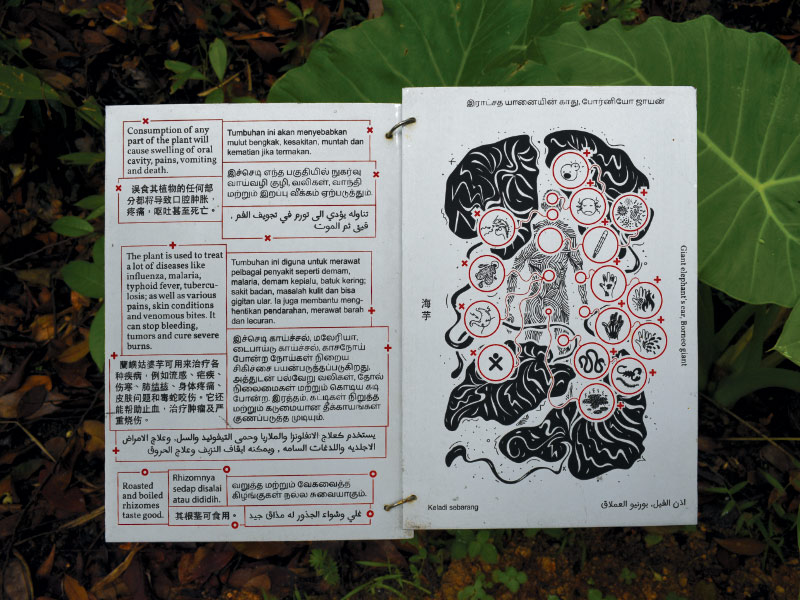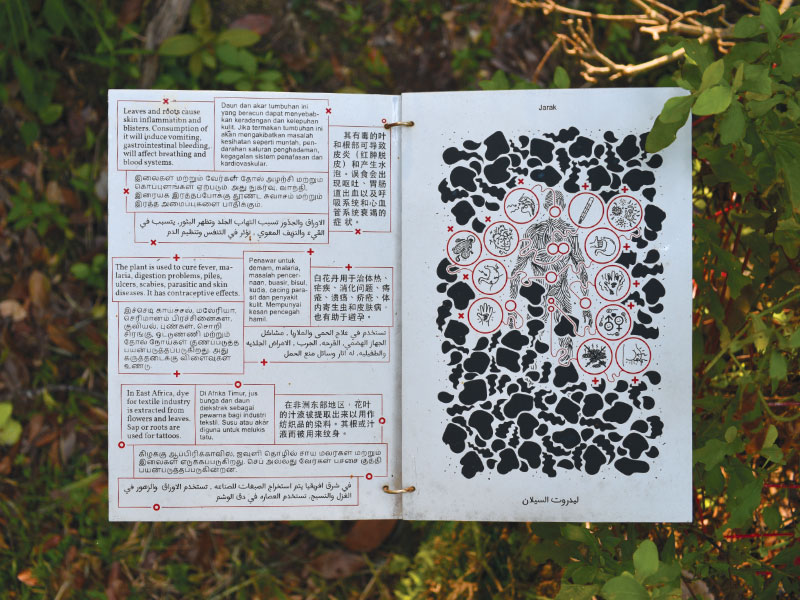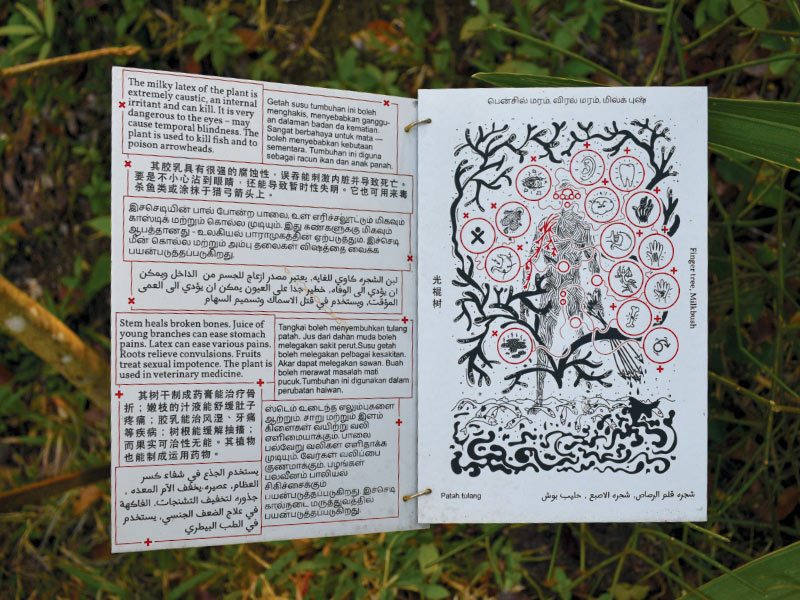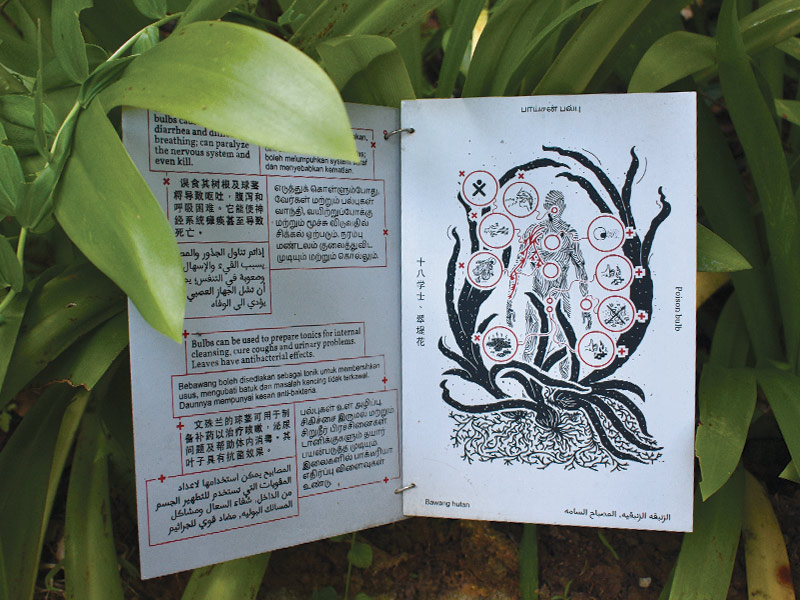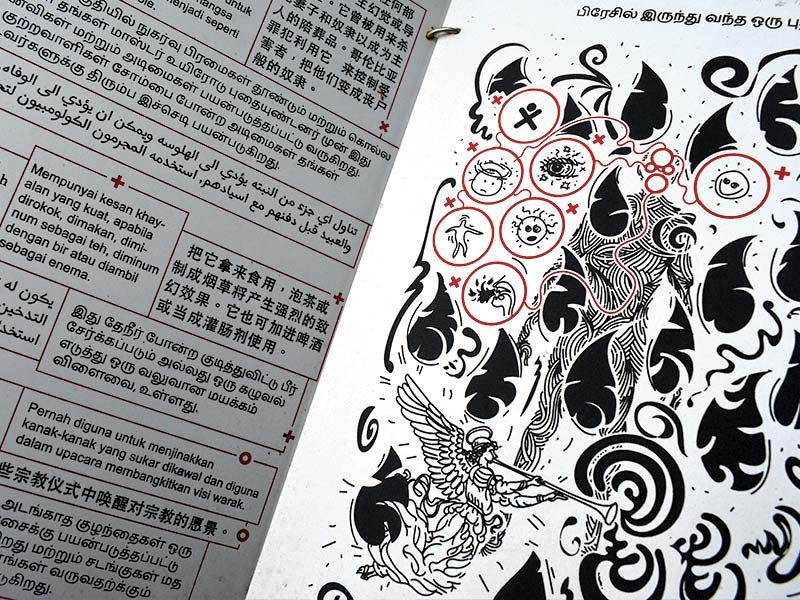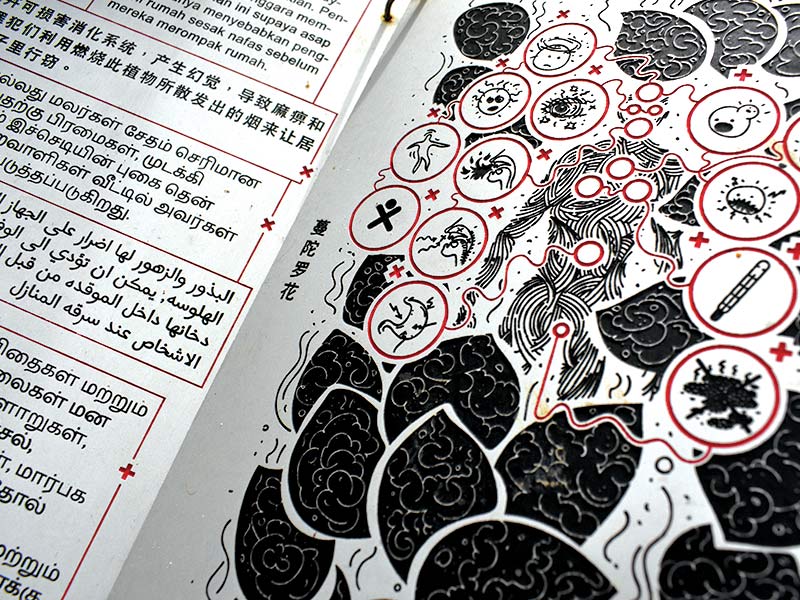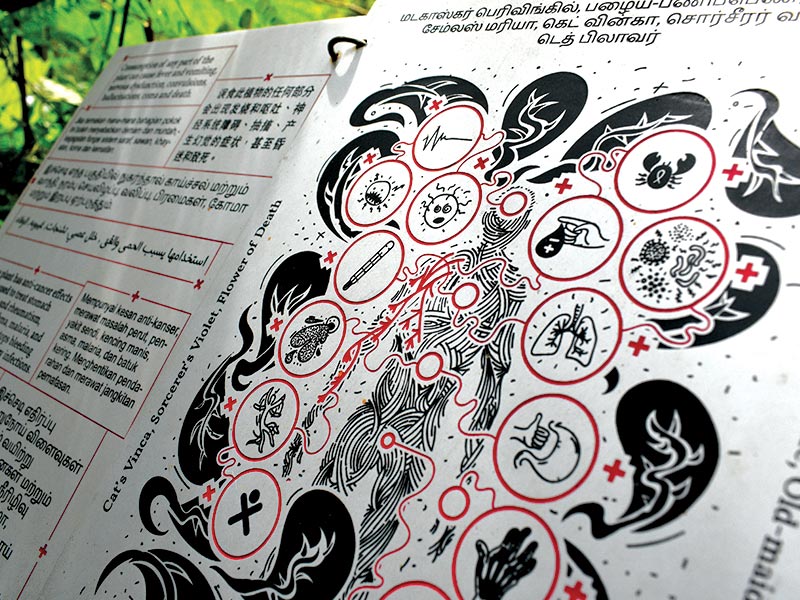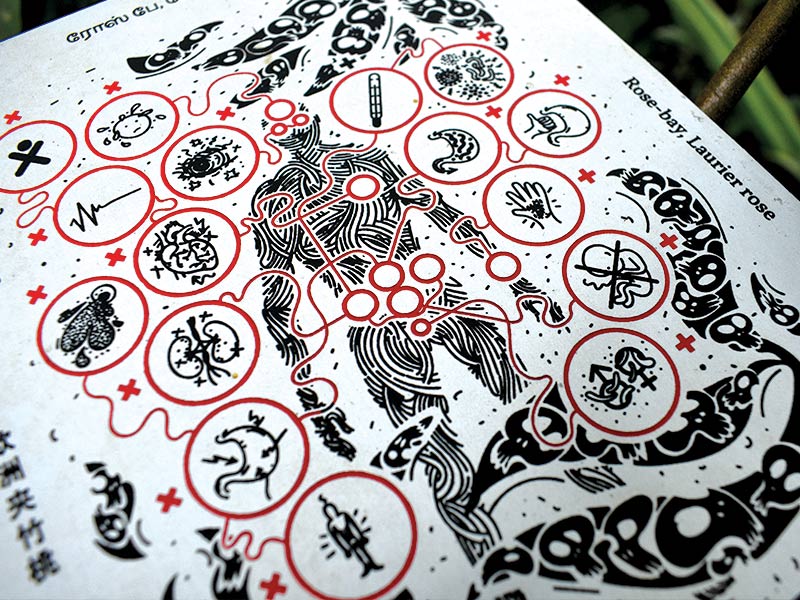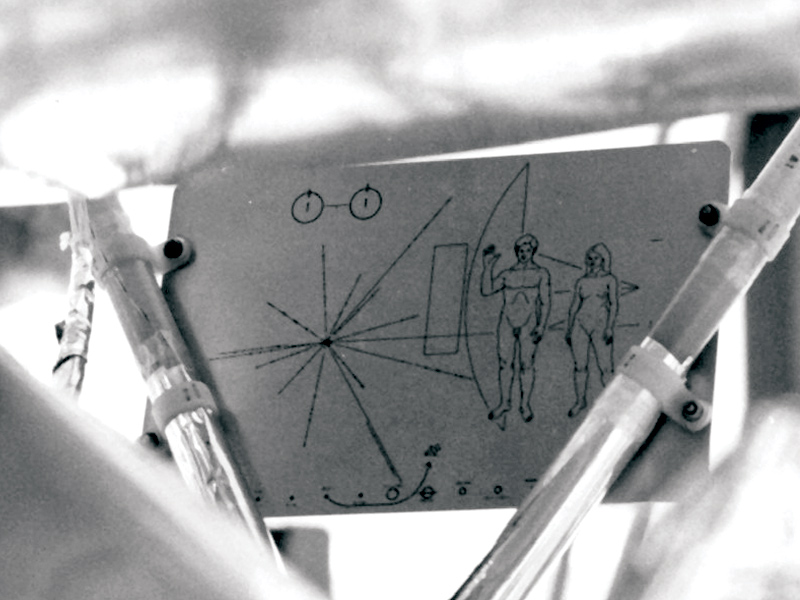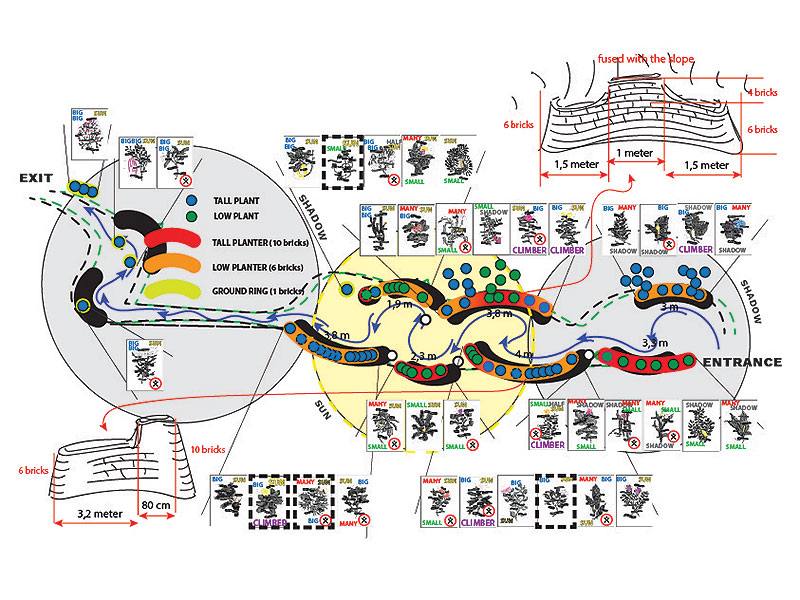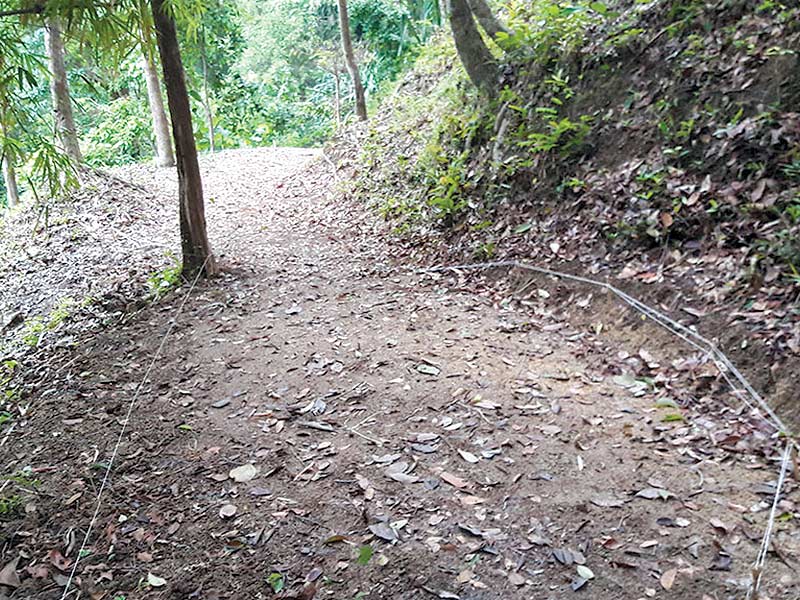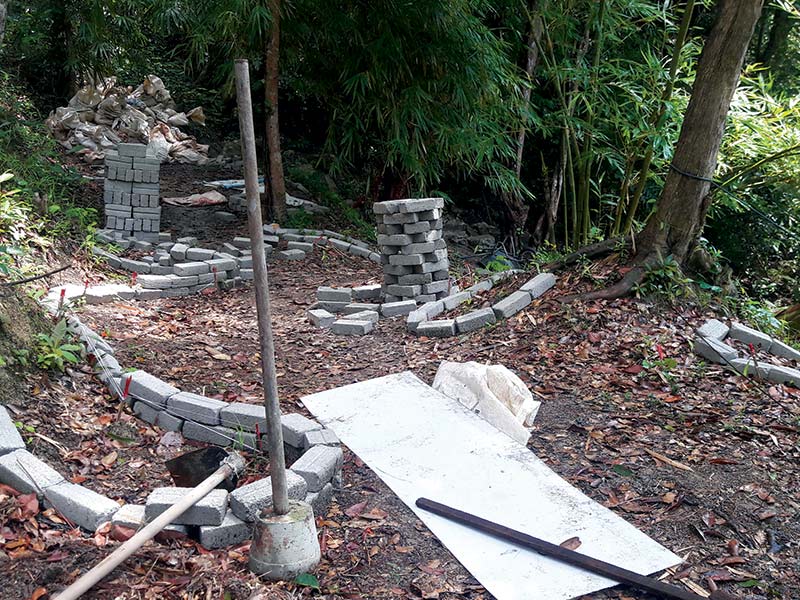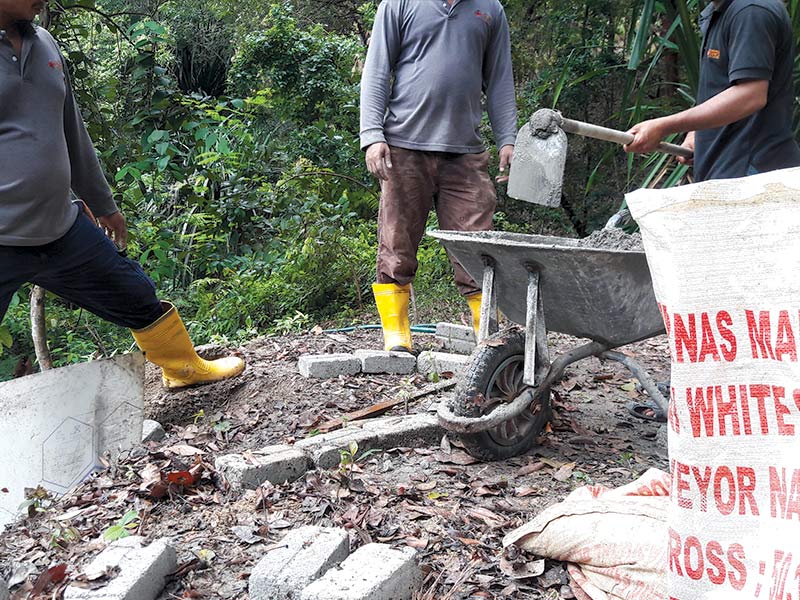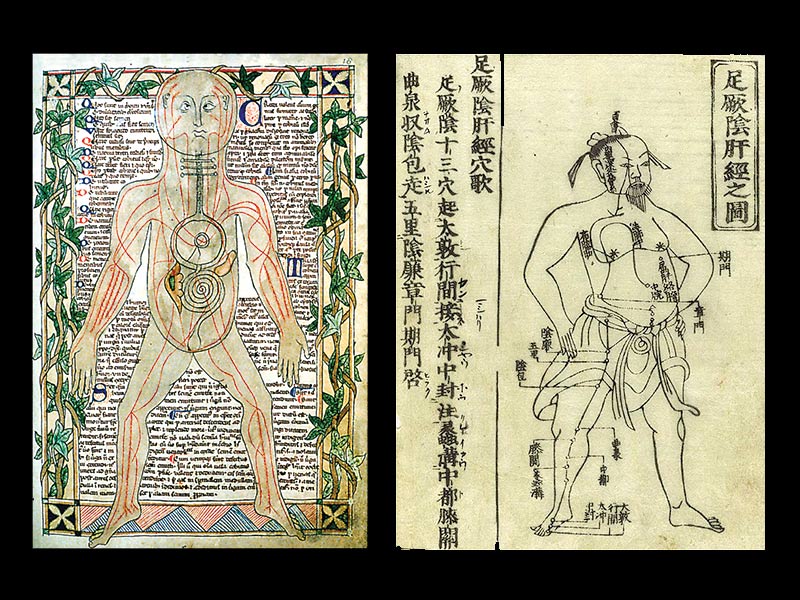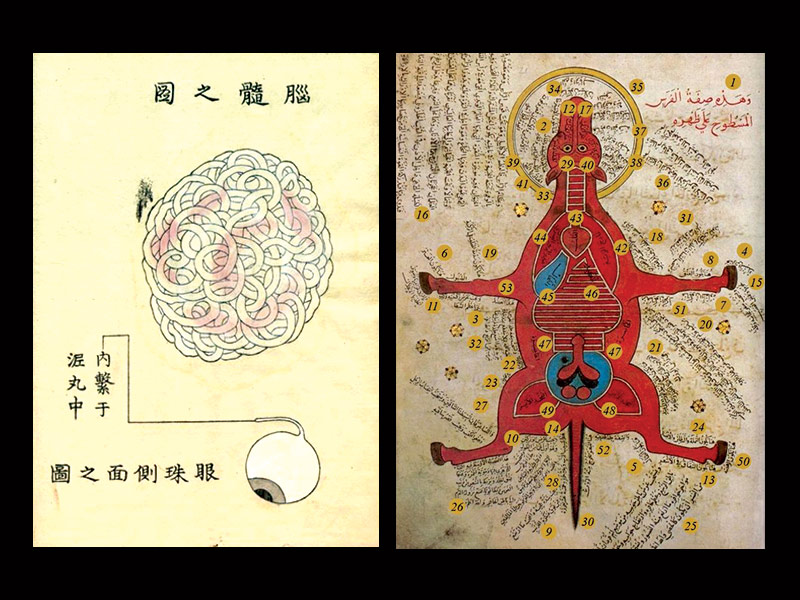Poison Garden
: exploring visual language as the most universal form of communication.Poison Garden is a small theme garden, which presents 38 poisonous plants from all over the world and tells their complex stories (scientific, medical and historical facts as well as myths and legends) in 6 languages: English, Bahasa Malayu, Mandarin, Tamil, Arabic, but most importantly – visual. Each plant has it’s own book-like aluminum signs, that are filled with short texts and detailed illustrations.
Commissioned by and in collaboration with Tropical Spice Garden; curator – Kenneth Khoo; interns: Poh Ling, Hwi Ji. Concept, design and illustrations by Tauras S. Some of the photos by Steven Ooi.
Overview
The main idea behind Poison Garden is the irony of evolution: the more poisonous those plants became, the more value for us it gained. We have been using them for ages to heal as well as to harm each other. Poisonous plants are definitely an inseparable part of human history. It may be a surprise to many that we live very close to deadly plants, probably even watering one everyday; for instance Dumb Cane (Dieffenbachia) or Money Tree (Zamioculcas zamiifolia). Two of the most poisonous plants featured in the Poison Garden are an African herb Castor Oil (Ricinus Communis) and a small Mediterranean Oleander tree (Nerium Oleander).
Tropical Spice Garden is a reservation park and a showcase garden situated on the jungle green belt of the North East of Penang, Malaysia.
Design
The challenge was to communicate complex medical terms for general audience and children. This is why we chose visual language as the most universal form of communication. Detailed illustrations that are etched on small aluminum books were inspired by so called Pioneer plaques: a pair of gold-anodized aluminum plates placed on board of two 1972 and 1973 NASA’s Pioneer spacecrafts, featuring pictorial message about humanity in case the aircrafts are intercepted by extraterrestrial life. Eric Burgess first mentioned the idea in 1971. The final plaques were designed by Carl Sagan and Frank Drake featuring the artwork by Linda Salzman.
Process
The garden occupies a long narrow terrace: a situation equivalent to a corridor - a complicated space for exhibiting. We designed curved planters in order to guide the audience in a zig-zag fashion one direction only. In this way we could effectively show both sides of the space and avoid traffic jams with returning visitors. The garden starts and ends with two Chinese style wooden and metal gates. The book-like signs in front of each plant contain detailed schemes with human body in the centre showing, which parts of the body the plants can harm or heal as well as other usages and symbols related with that particular plant.
Excerpts from the research
Thorn apple (Datura metel) – a shrub from Pan tropical regions all over the world: the whole plant is toxic. Chewing seeds and flowers produces a flushed face, with dilated pupils, dryness and burning in the mouth, thirst, difficulty in swallowing, abdominal pain, excitement, confusion, delirium and violent behavior, auditory and visual hallucination, followed by drowsiness, general weakness, hyperthermia with cold extremities, incoordination, urination problems and muscular and respiratory paralysis. Contact with eyes causes pupil dilation. Causes death as a result of respiratory paralysis. Seeds used to treat mental disorders, fever, tumors, breast inflammation, skin diseases and diarrhea. Leaves are smoked to relieve asthma. In Southeast Asia, robbers used to burn seeds of the plant and direct the smoke, mixed with aromatic substances, into the house of intended victims to knock the occupants out. This allowed the robbers to ransack the house at leisure. Invariably, the victim would wake up the next morning after a deep sleep and not remember what happened the night before.
Suicide tree also known as Yellow-eyed Cerbera (Cerbera odollam) – a tree from India and Pacific: seeds and leaves are poisonous, it affect blood and central nervous system, cause nausea, fatigue, persistent vomiting, severe abdominal pain, pupil dilation, can cause coma and even kill. The fresh fruits are rubbed on the legs to relieve rheumatism and the oil from the seeds is rubbed on the skin to cure itch or scabies and to relieve colds. The seed oil has insecticidal properties and is used as a hair ointment to kill head lice. The bark and roots are an excellent purgative, cure paralysis and ringworm. Seeds are used to stupefy fish, kill rats, to poison arrows. Cooked leaves are edible. Timber was used for lighting in Malaysia but produces unbearable quantities of smoke. Charcoal was used in Thailand for gunpowder. The plant was used to poison newly married wives “who do not meet the exacting standards of some Indian families”. The generic name Cerbera alludes to the toxic nature of the plant and derives from Cerberus, the three-headed dog of Greek mythology, which guards the entrance to Hades, the land of the dead.
